16-726 Final Project: Curve-based Image Editing and Style Transfer

Motivation:
In previous assignment 4, I learned that Neural Style Transfer is able to achieve amazing results on transferring one image's style to another image. However When I also observed that transferring binary sketch images' style onto another picture is often less successful, and can even fail badly that makes the content image disappear (Figure 1).



Methods
To implement curve style transfer,I implemented the following steps:
1. Pixel Image preprocessing
Since the majority of images are pixel images, I found it necessary to create an image processing pipeline to vectorize images.
2. Curve editing rules implementation
Make curve editing rules to edit content image, and visualize the editing effects. Note that this has to be a differentiable operation.
3. Loss function design & differentiable rendering
To optimize an image's style, I need to develop a loss function. In this project, I made an algorithm to differentiably render
curve-based images onto a pixel canvas, so that I can get style loss using neural style transfer's pipeline.
4. Toy problem on reconstruction optimization
Build a toy problem to verfy the feasibility of this methodology. Fisrt, select a curve-based image (as the content image) and modify
it using shape rules with some parameters {t_style} (as the style image), and see if the optimization pipeline can converge the values {t_learned}
to the style image's {t_style}.
5. Curve-based style transfer implementation
Combining step 1~3, and use the pipeline developed from step 4 to perform style transfer. The style-perception model used in this project
is VGG19.
6. Hyperparameter tuning
Tune parameters including:image processing parameters (image, image size, padding color, margin, scaling, etc),
rendering parameters (thickness, number of sampling points, etc),
optimization parameters (learning rates, optimizer, scheduler, style layers) The follwing chapter will explain these steps in details.
Implementation Details
1. Pixel Image preprocessing
The pipeline of an image with an object is shown in Figure 4.
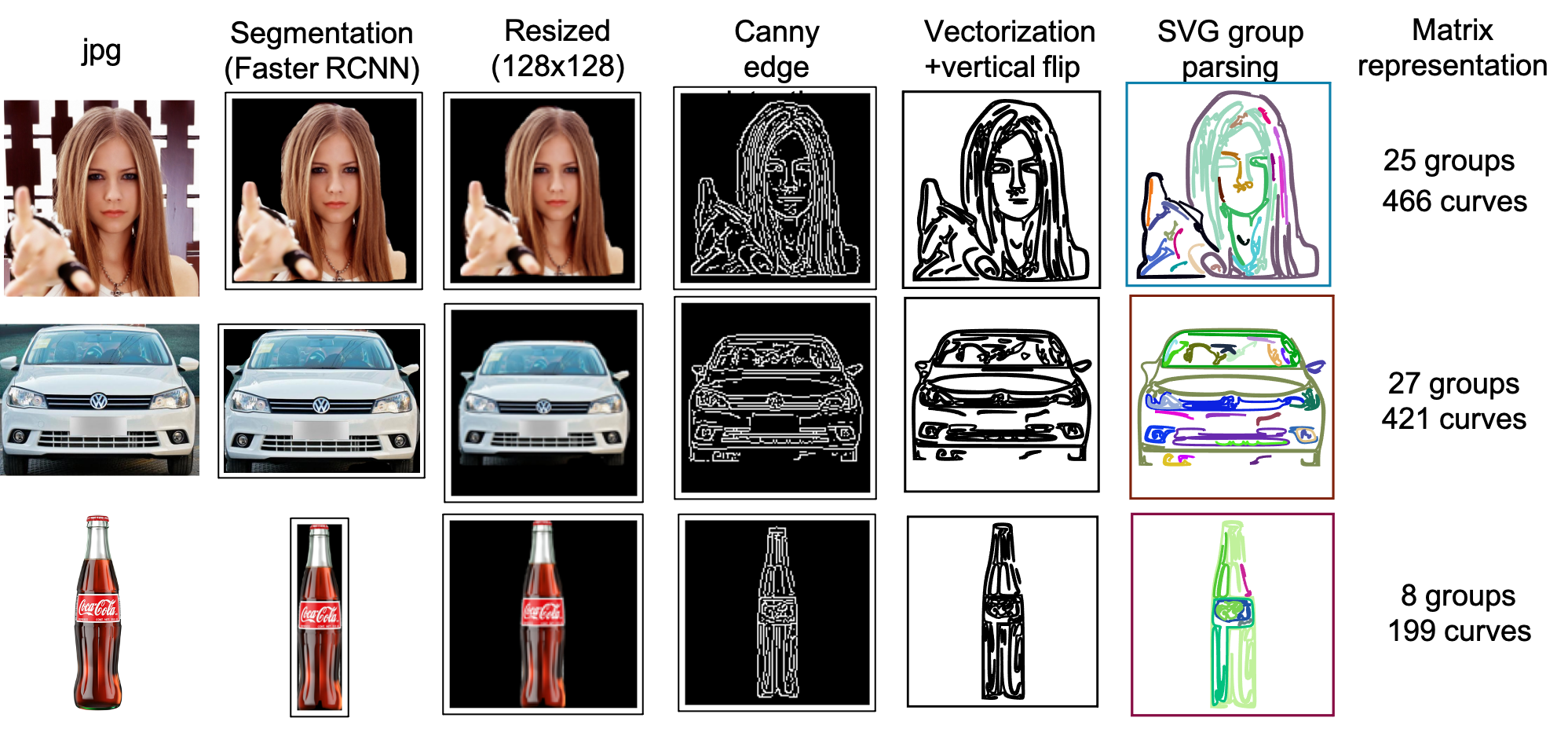
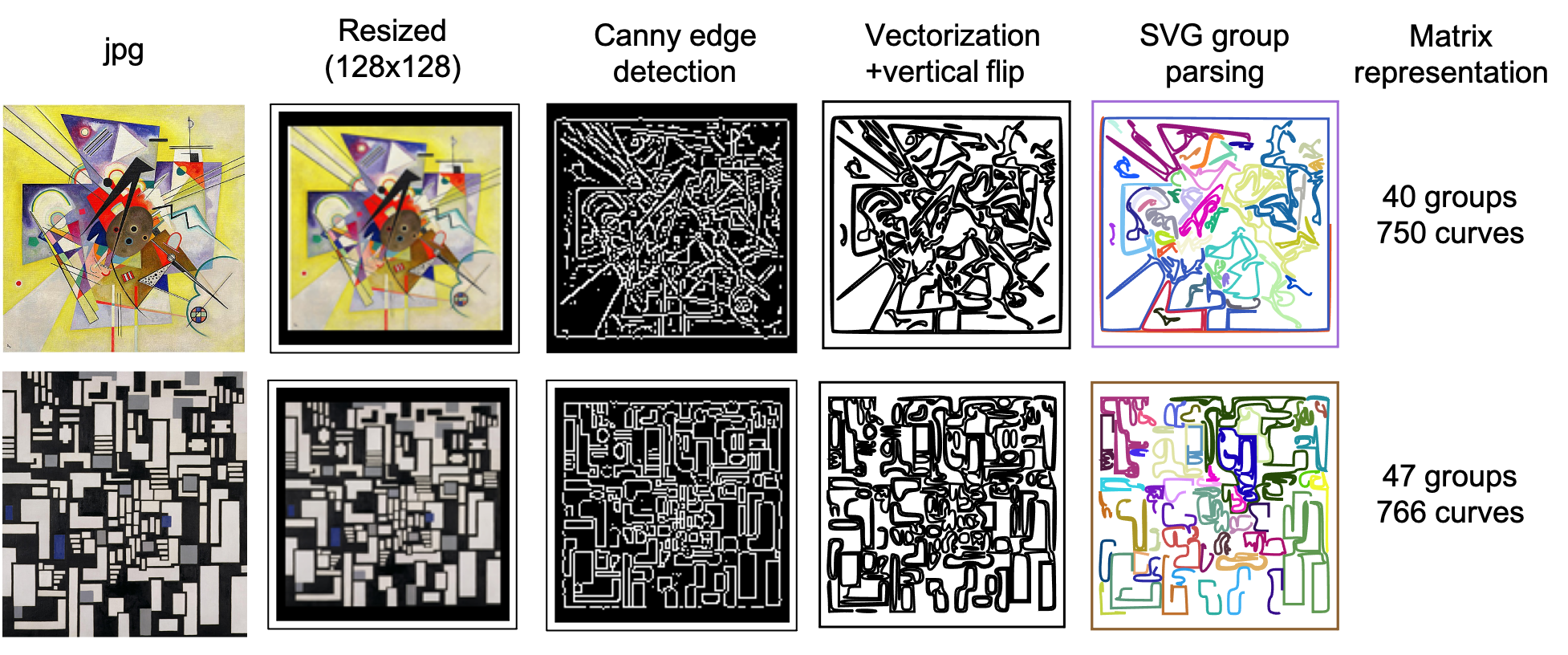
2. Curve editing rules implementation
Since the foundation of curve-based style transfer is based on the variety of shape rules, I first listed out some shape rules (Figure 6)
and implemted as many as I can in the time I have.

I first developed transformation rules on curve-based images: (Figure 7)

I then also made a rule to modify image's curvature: (Figure 8)
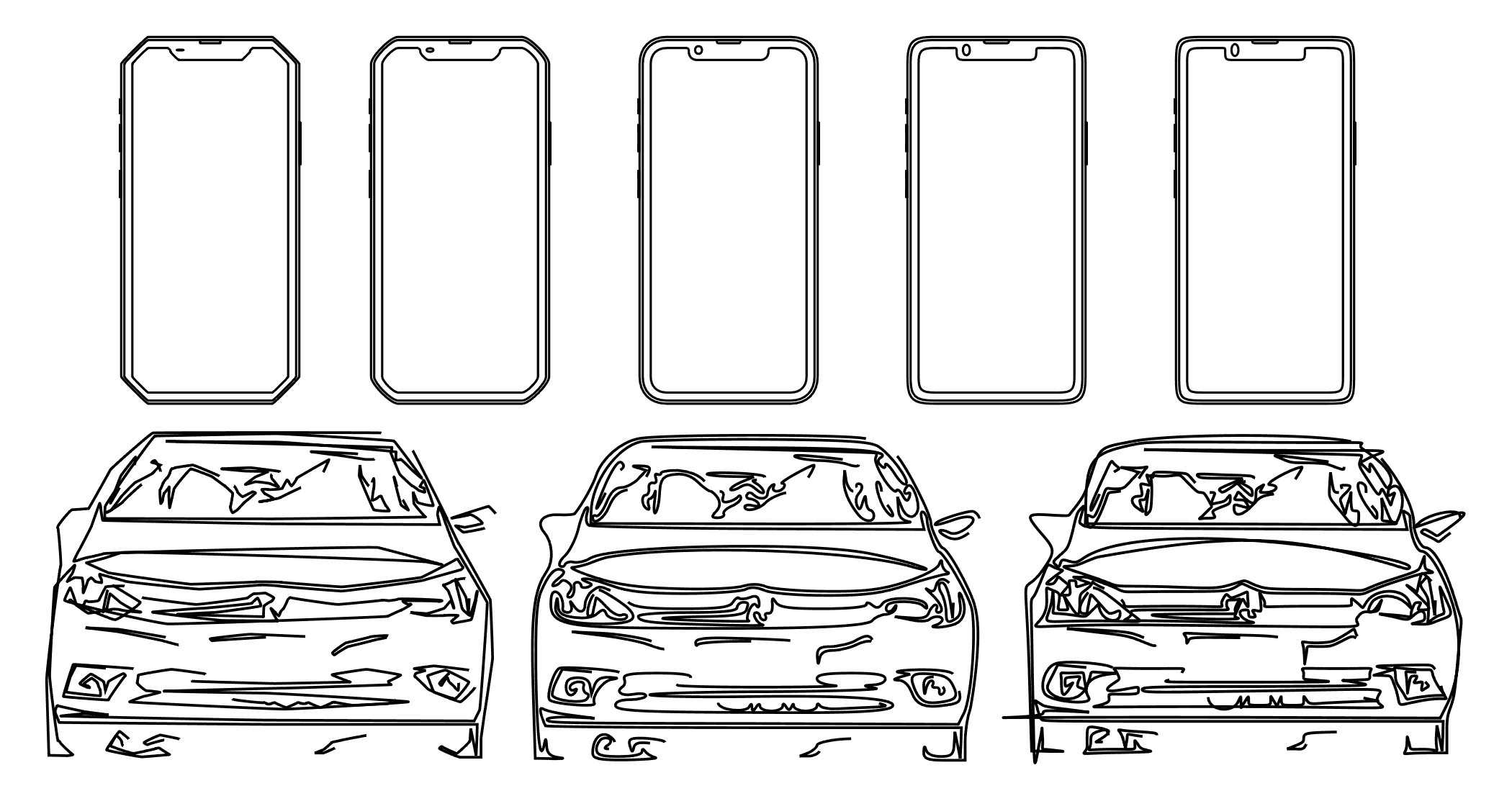
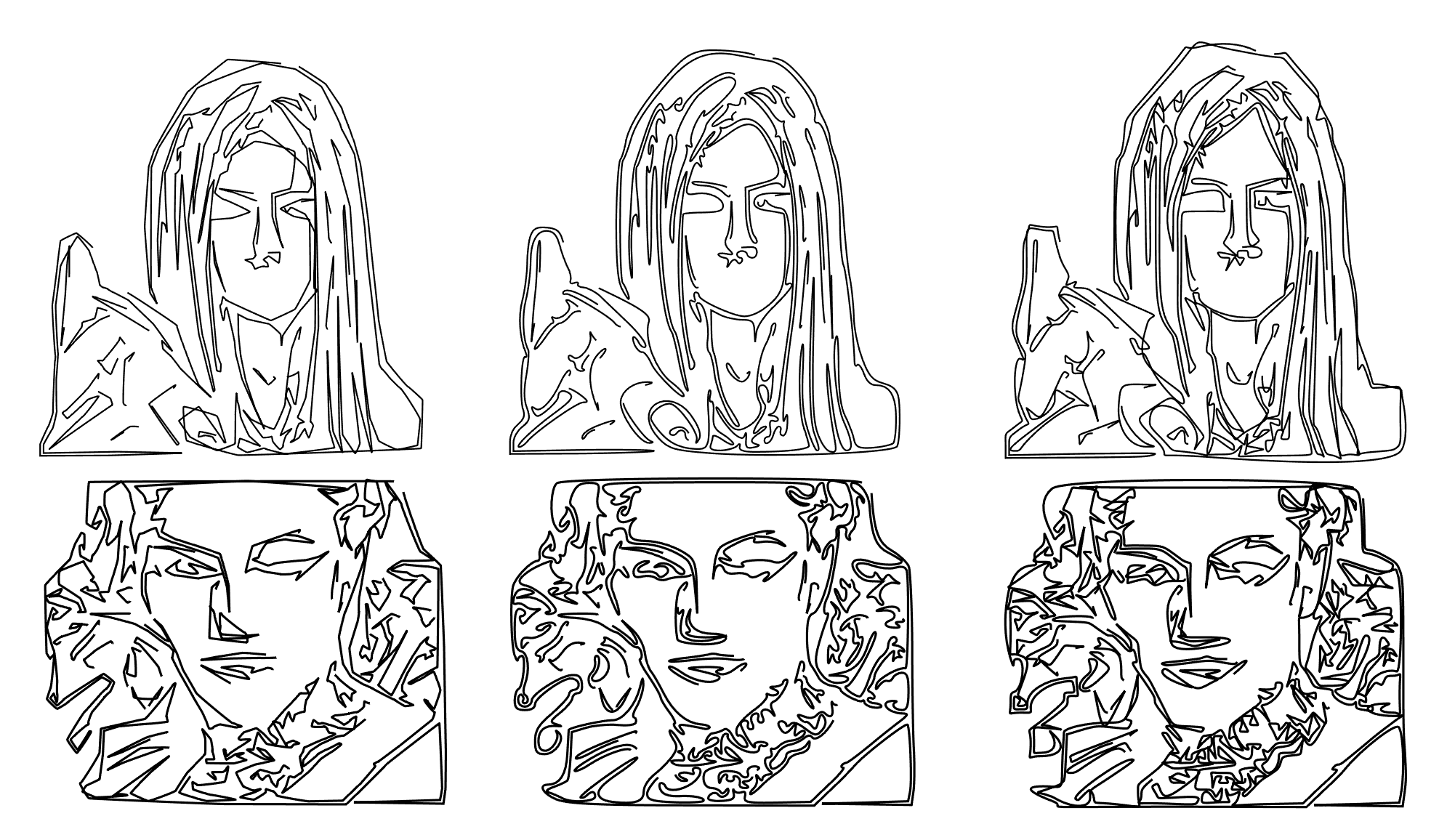
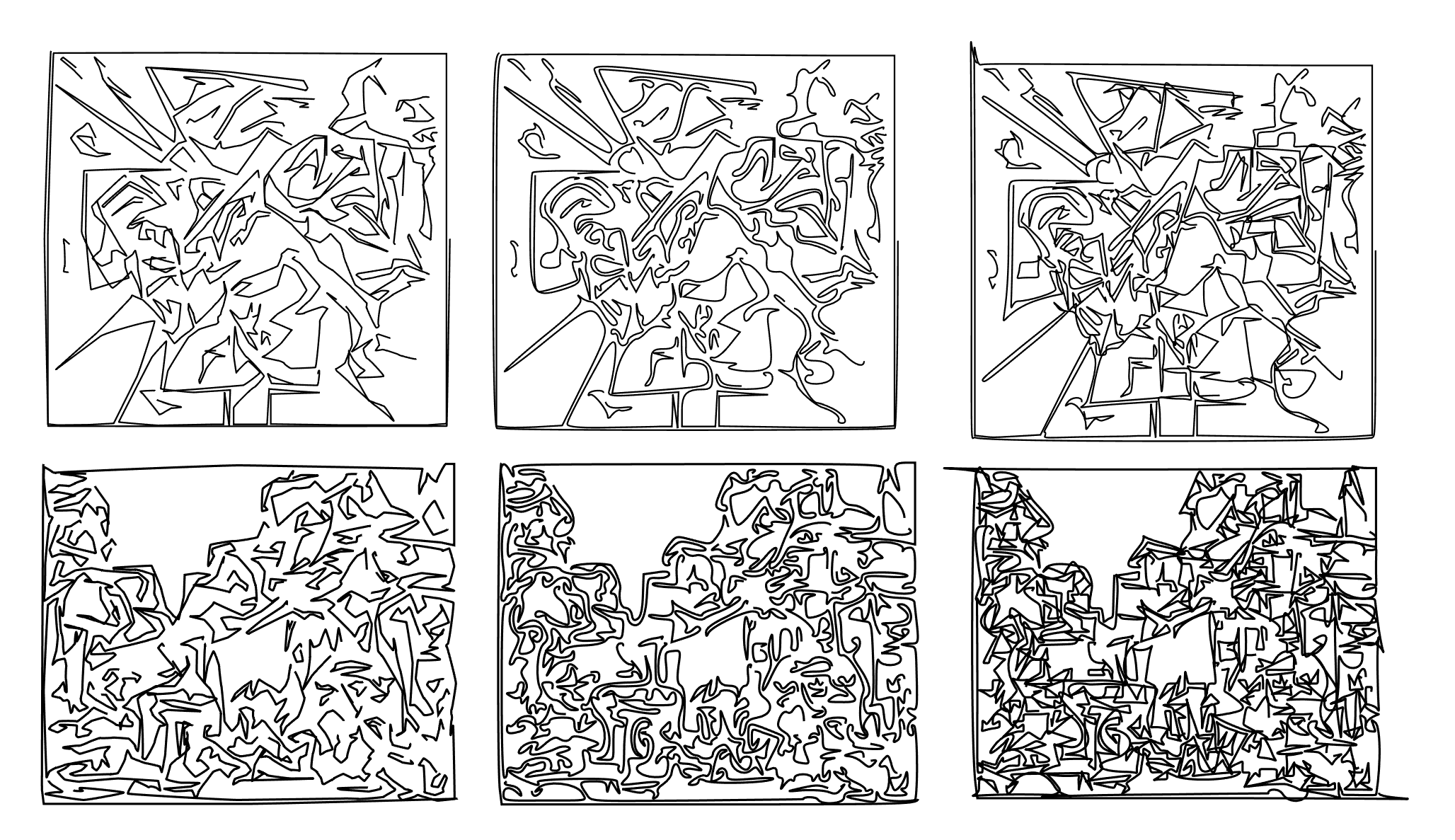
I then made algorithms on offsetting the curves: (Figure 9)
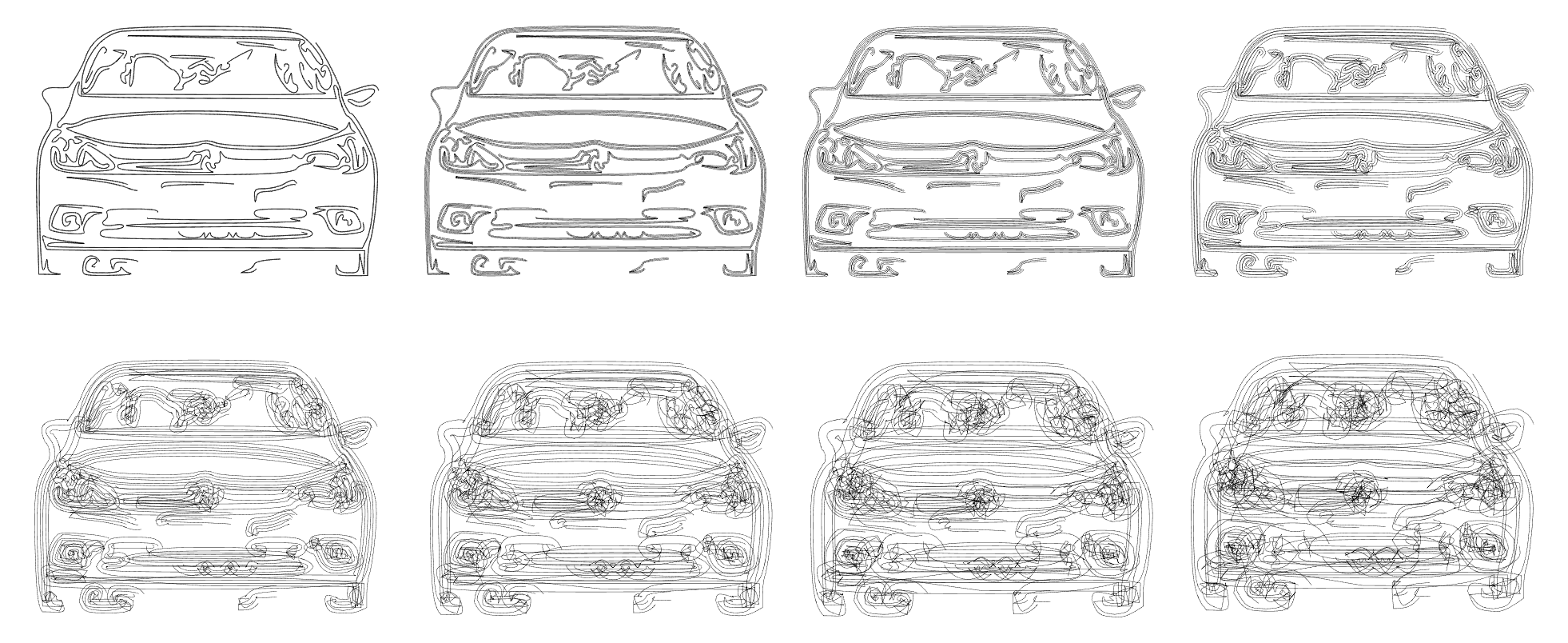
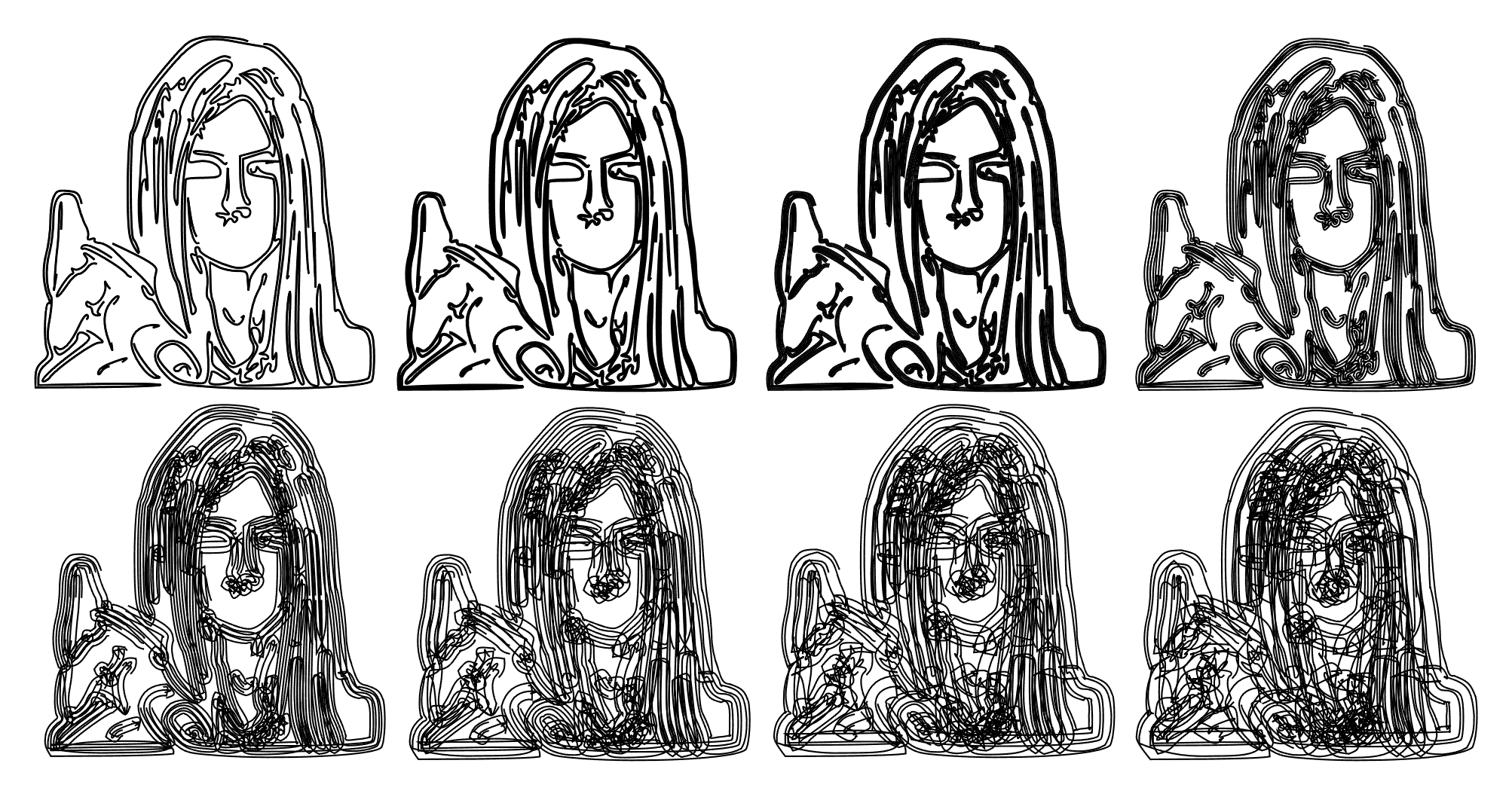
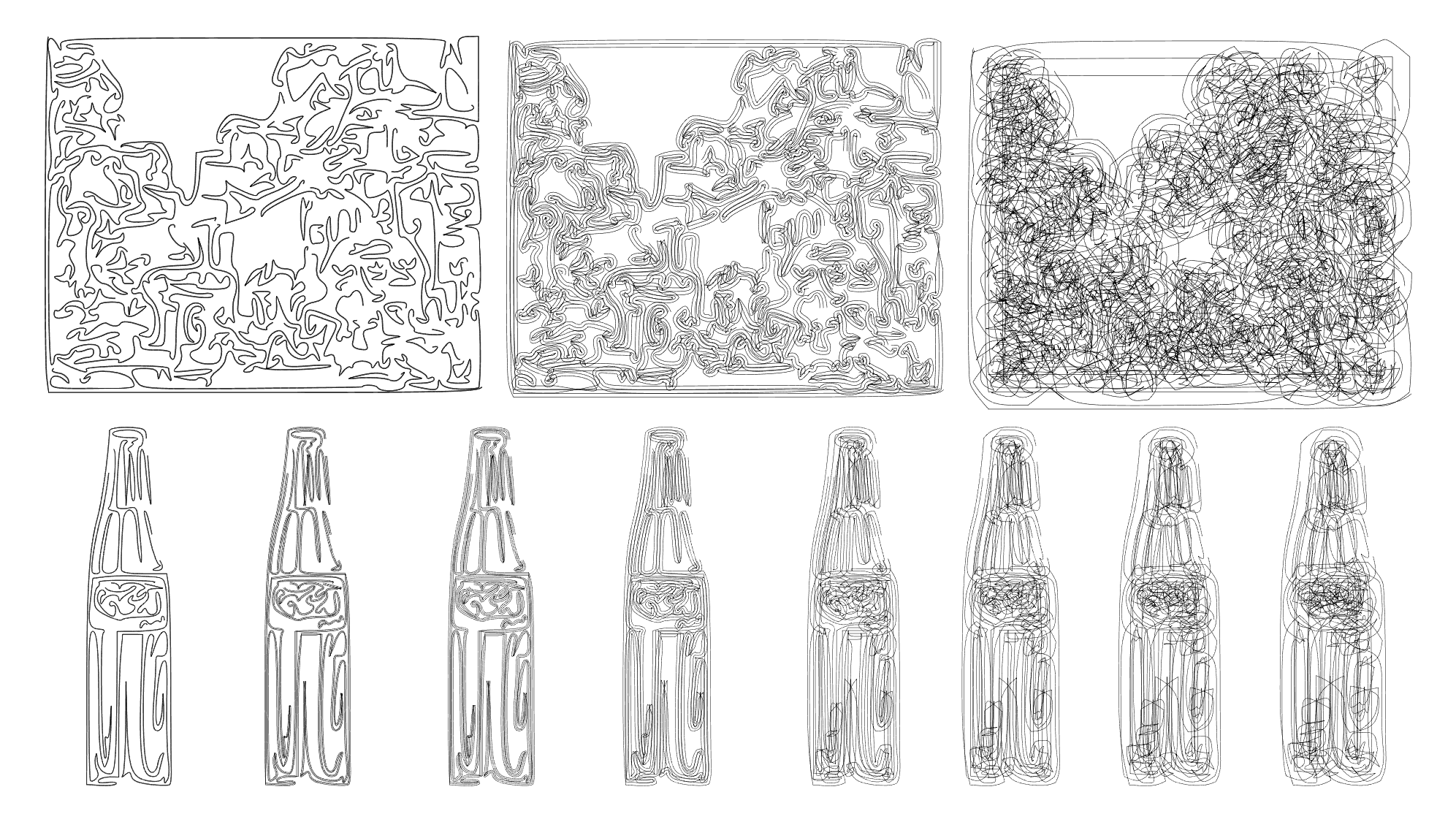
Here are animations of tuning parameters of shape rules: (Figure 10)
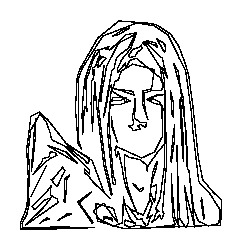 |
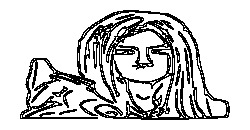 |
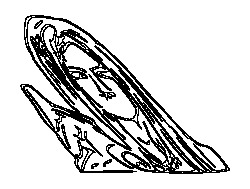 |
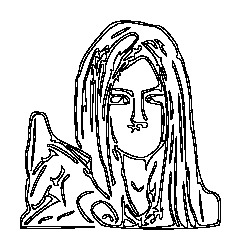 |
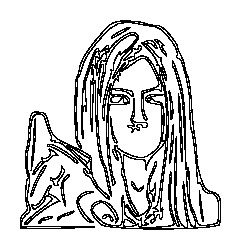 |

3. Loss function design & differentiable rendering
In this project, I choose to use differentiable wireframe developed in LayoutGAN (2019 Li et al) to render my curve-based data, so I can apply pixel-based
pretrained model like vgg19 at a later step of the pipeline on rendered pixel images. (Figure 12) The algorithm was modified to apply on cubic bezier curves.

Using my original code, I render an image curve by curve and iteratively add it onto the canvas. It works perfectly for small images like a cola bottle or a phone. However, if I render an image that has more than 100 curves, it is very likely to take more than 5 minutes just to render.
Therefore, I rewrote the code in matrix form (linear algebra) and utilize GPU, and it did dramatically speed up the rendering process (<10 secs for a 100 curve iamge). However, this rendering process will cost a lot of storage, therefore when rendering images larger than rendering method, this will again fail due to not enough GPU memory.
At last, I found a good balance between this tradeoff. By iteratively rendering batches of curves at a time in GPU and throwing it back to CPU, I was able to render images as large at 700 curves within 10 seconds. (Figure 13)

4. Toy problem on reconstruction optimization
Since reconstruction optimization has a one and only ground truth, I think even though I am eventually not using it in the curve-based style transfer
problem, these toy problems are still important to verify the concept, that optimizing curve rule parameters can lead to valid results.
Respectively from easy to hard, I build 3 toy problems with rectangles(curvature), phones(curvature), and Avril(curvature, height, width)
(Figure 14).
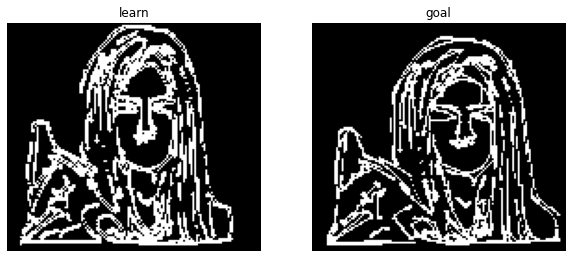 |
 |
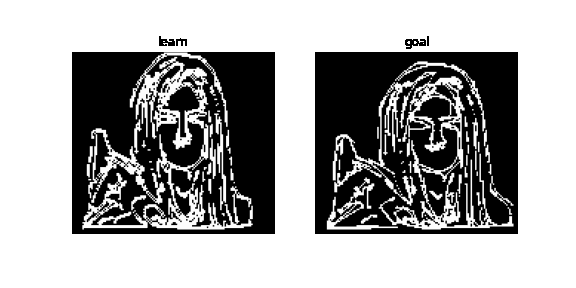
1. Optimizer: SGD works a lot better than Adam(which mostly explodes), and for multiple variables, Adagrad may be better than SGD.
2. It is crucial to set customized learning rates for each parameter, and for each optimization problem.
3. Adding CNN layers (for example, max pooling) and sum up the image loss for different layers is crucial for more complicated (many curves, many parameters) to not explode.
4. Using a step scheduler will also help converge, however one must be aware to not decrease the LR too fast to avoid local minimum.
5. Curve-based style transfer implementation
At the last step, I imported the pretrained VGG19 and performed curve-based style transfer. Here are some successful results below
(Figure 15, 16, 17). I also put the results of neural style transfer to show that for binary sketch images, curve style transfer works better.



6. Hyperparameter tuning
The main takeaways of this experiment is that this optimization process is very sensitive. However, there are several ways that can make
the process more robust:1. Choose the suitable background color (usually black or white) can remove unnecessary curves.
2. Do segmentation if possible, which will remove a lot of redundant noises.
3. Rendering scaleas big as possible (as long as GPU can compute): Due to GPU limitation, for images that have >400 curve, I can only render them on a 128x128 canvas, which can lose a lot of information.
4. The style image can have many curves, but content image should be <400 to get good results.
5. If loss explode, decrease lr. If loss not changing, increase lr.
Future works
The main contribution of this project is the novelty of applying style transfer on images using shape grammars. Since it's just a prototype
to prove the concept that curve-based style transfer is possible, there are many aspects that can be developed in the future to
achieve better results, and I will list them below in the order of the pipeline:1. Image preprocessing: The vectorization pipeline can still be improved to produce less curves. Methods include: padding color blending (so no edge will be detected at the frame), edge detection involving high/low pass filters, or use ML methods to perform edge detection(https://carolineec.github.io/informative_drawings/). An additional extension is to save the images with colors, which may be a good additional information for better results and wider applications.
2. Curve rules: Currently, the optimization pipeline has a limitation of styles that can be successfully transferred, and one of the reasons is that there are too few rules that I develop and allow, which restricts the degree of freedom very much. In my opinion, the rules to simplify(like merging) and complicate(like offset) curves are most crucial for wider applications and variations. One important notable is that all developed rules have to be differentiable in order to be optimized.
3. Differentiable rendering: The original paper (2019 Li et al) used this rendering method only on line segments, and their images rarely has to deal with more than 100 curves per image. In my case, however, since I very often render more than 400 Bezier curves (which I consider each curve as 4~6 line segments), the computational cost is way heavier (ex: an 128x128 image with ~450 curves will use ~20 GB). This limits my image quality in every aspect (smoothness, appearance on canvas)(Figure 18). This will also prohibit me from building generative curve rules. While having a very strong GPU can definitely increase the rendering physical ceiling, a better usage of regulating GPU power in my current algorithm is necessary.
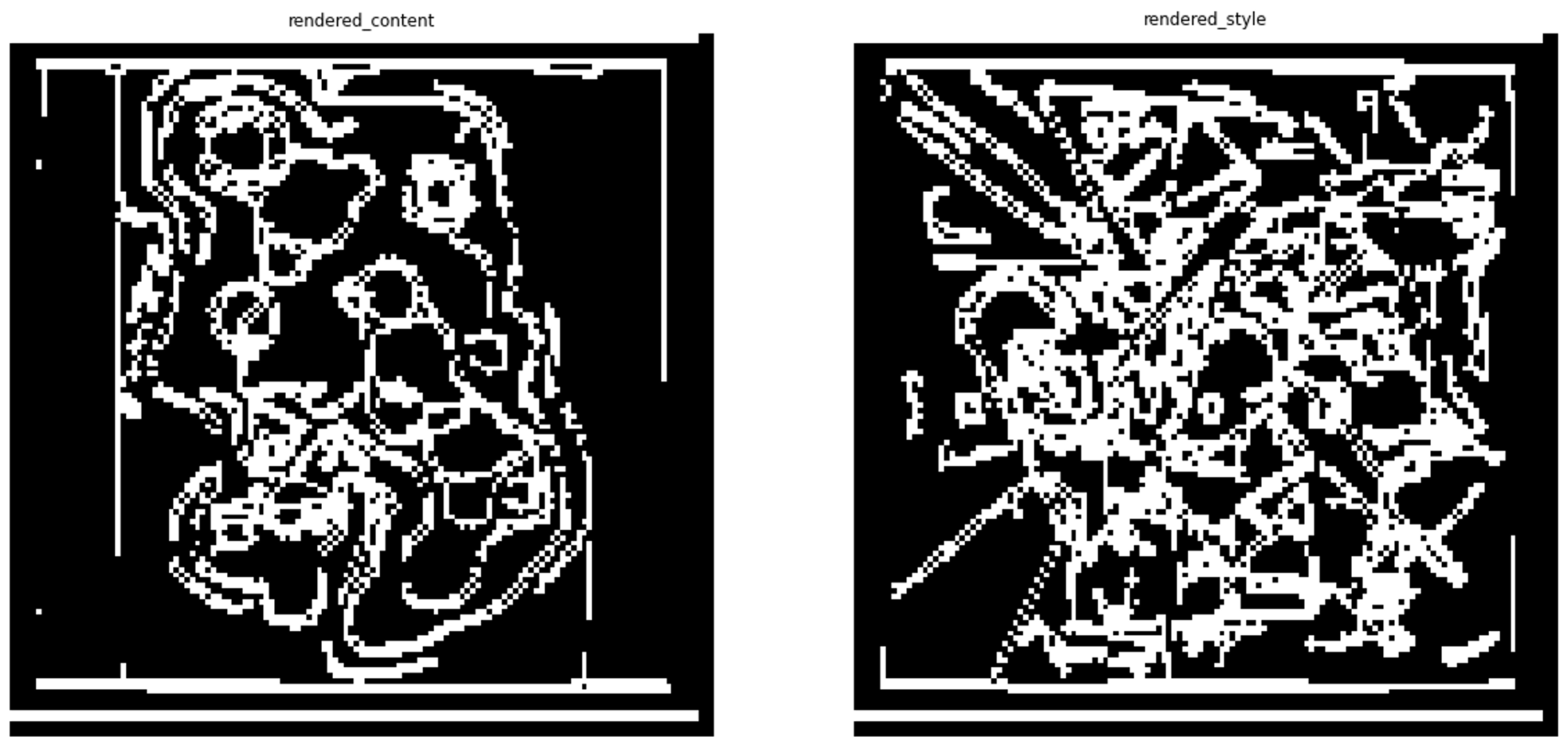
5. Hyperparameter tuning: Although I did not plan to use pixel content loss as part of the optimization problem, I also intend to try tuning it and see what results will it bring out. Another tricky tuning thing I found was that every content-style image pair has their own learning rates that has to be customized, and in the future I hope I can find the root cause of this and can automatically choose the suitable parameters for each problem. Another thing I want to try is to start at multiple different starting point and choose the one that has the lowest style loss as the final result. This is because the optimization process is so sensitive that I suspect there are multiple local minimum, and I have no idea whether I am stuck in one of them.
6. Explainability: The advantage of using curve-based style transfer is that it offers great explainability on eahc curve's contribution and their modification parameters. Therefore, I believe that doing an ablation study to visualize the curves that are most modified can definitely show some coherent yet interesting results, which can help us better answer the question "what makes a style a style".(Figure 19)

Acknowledgement
First of all, I want to thank my advisors Prof. Cagan and Prof. Kara for bringing me the idea about shape grammars and style transfer. I would also like to thank the instructors in 16726 (Prof. Jun-yan and Sheng-yu) that enlights me with state-of-the-art learning-based image synthesis methods, and the instructors in 62706 (Prof. Ramesh and Jinmo) to introduce me with conventional generative systems in design.